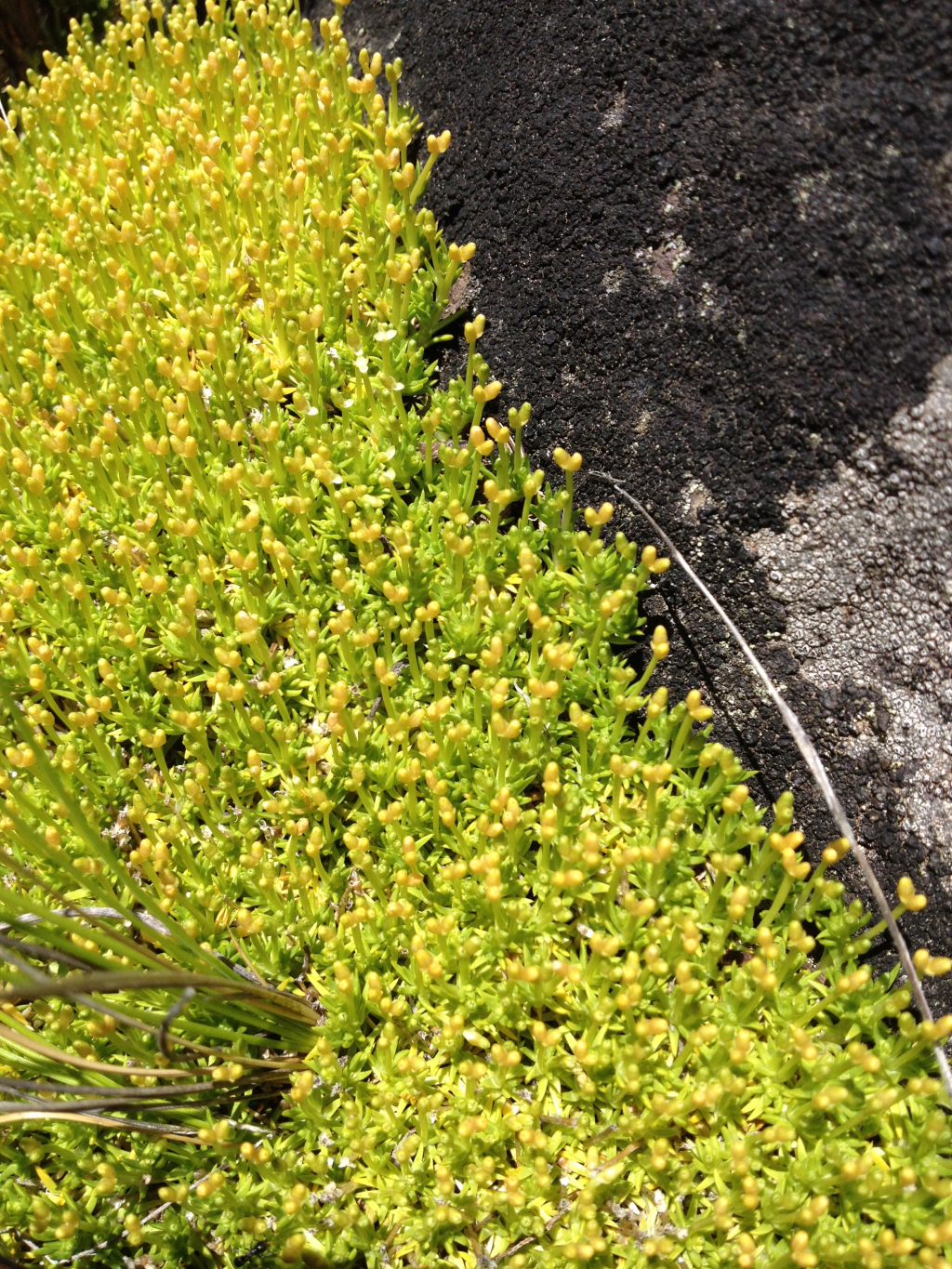Scleranthus biflorus
(J.R.Forst. & G.Forst.) Hook.f. Twin-flower KnawelDense, compact, cushion-like perennial with non-woody base; stems to 12 cm long, glabrous. Leaves (2–)4–10(–12) mm long, (0.3–)0.4–0.7 mm wide, keeled, incurved, glabrous; apex apiculate; margin very narrow and scarious, minutely denticulate to undulate. Inflorescence a pedunculate pair of sessile (rarely subsessile) flowers; peduncle (0.9–)2–10(–16) mm long in fruit, glabrous; bracts glabrous; pedicels absent or rarely up to 0.3 mm long. Sepals 4, triangular-ovate, 0.4–0.7 mm long, 0.3–0.6 mm wide, overlapping at base, margin scarious, midrib keeled; stamens 1, level with or exserted beyond the calyx, long persistent. Fruit not ribbed, veins obscure, (1.2–)1.5–2.0(–2.3) mm long, 0.7–1.1 mm wide Flowers Oct.–Feb.
Wim, GleP, Brid, GipP, OtP, CVU, EGL, EGU, WPro, HSF, HNF, MonT, HFE, VAlp. Also Qld, NSW, Tas. New Zealand. Grasslands and woodlands of tablelands and montane to alpine habitats, occasionally found near sea-level at lower latitudes.
Cowley, K.J.; West, J.G. (1996). Scleranthus. In: Walsh, N.G.; Entwisle, T.J., Flora of Victoria Vol. 3, Dicotyledons Winteraceae to Myrtaceae, pp. 248–251. Inkata Press, Melbourne.
 Spinning
Spinning

